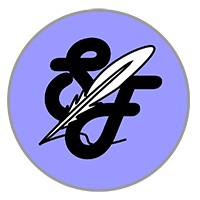Why plan a story before writing? Because planning tremendously decreases the time needed to edit the story later.
The planning process and depth are different for every author. However, there are some good starting points:

- Don’t make the planning process painful
- Do give yourself down-time to let the subconscious mind generate ideas
- Start with the big picture — the story world — what is it like? sight, sound, smell, taste and feel. (Story world is critical for speculative fiction)
- In the story world think about what might happen to a few unnamed characters — say it in one sentence.
- What are the goals and motivations of the protagonist and antagonist?
- What’s the main conflict in the story?
- What’s the “B” story — the background action or thinking that will impact the climax of the story (sometimes a love angle).
Fantastic, you have started planning your novel. Record what you have so far. Decide if you are writing in 1st person or 3rd person.

Think about plot: trace the novel’s plot like inscribing a “W” — briefly tell the story to yourself:
- To start with, the situation for the protagonist heads downward and hits bottom (end of act I) then bounces up.
- In the middle of the story things look better, but the antagonist gains ground with an increasing pace of problems going downhill for the protagonist.
- The situation hits the second low (end of act II).
- Only with a change of thinking and help from a “B” plot do things turn around. The pace quickens.
- Before the climax at the final peak of the W the conclusion hinges on one thing, one all-is-lost moment. An inventive plot twist is required!
- Ah, happiness (or not), it works out (end of act III) and the story ends. A short epilogue follows to mop-up loose ends.

Limit yourself to five main characters and write a short biography of each (with names) including strong personality traits for each. Other characters are “extras” that should remain one-dimensional and may be forgotten or “killed-off”.
Decide on the number of chapters. Forty is a nice round number, but it does not matter. The midpoint in the story would then be at chapter twenty.
Use your favorite method for outlining. In past years, “three by five cards” worked well. Now, electronic means for outlining are favored such as a spreadsheet or a graphic environment (like Scapple). Keeping the “W” in mind list the three acts, each with chapters inside. In a sentence, state what happens in each chapter.
The big step: put scenes inside each chapter and again write a sentence to say what happens in each and who is the point of view character. Most books have an inherent up and down from scene to scene — conflict followed by partial resolution followed by conflict followed by… Readers subconsciously expect this flow, so make it happen.

You now have your writing orders. Start at the beginning and write to the end.
Blake Snyder’s Save The Cat has helped many authors organize fiction writing to maximize reader impact. Here is a spreadsheet summary for 40 chapters in 300 pages.

R. C. Beckett was given a collection of Fantasy and Science Fiction Magazines as a teenager and read hundreds of the stories — he was hooked and started writing fiction in 2013. He loves to write hard science fiction, but can’t help adding a bit of humor. Publications: “Exit Mars” and “Exit Earth” (available on Amazon). “Exit Pluto”, the third in the Exit series, should be published in late 2020. He lives in Golden Colorado and is a member of Rocky Mountain Fiction Writers. Walking his dog is key to his writing since that’s when he imagines plots for his stories. He also volunteers as a webmaster for non-profit companies including SpecFicWriters.

